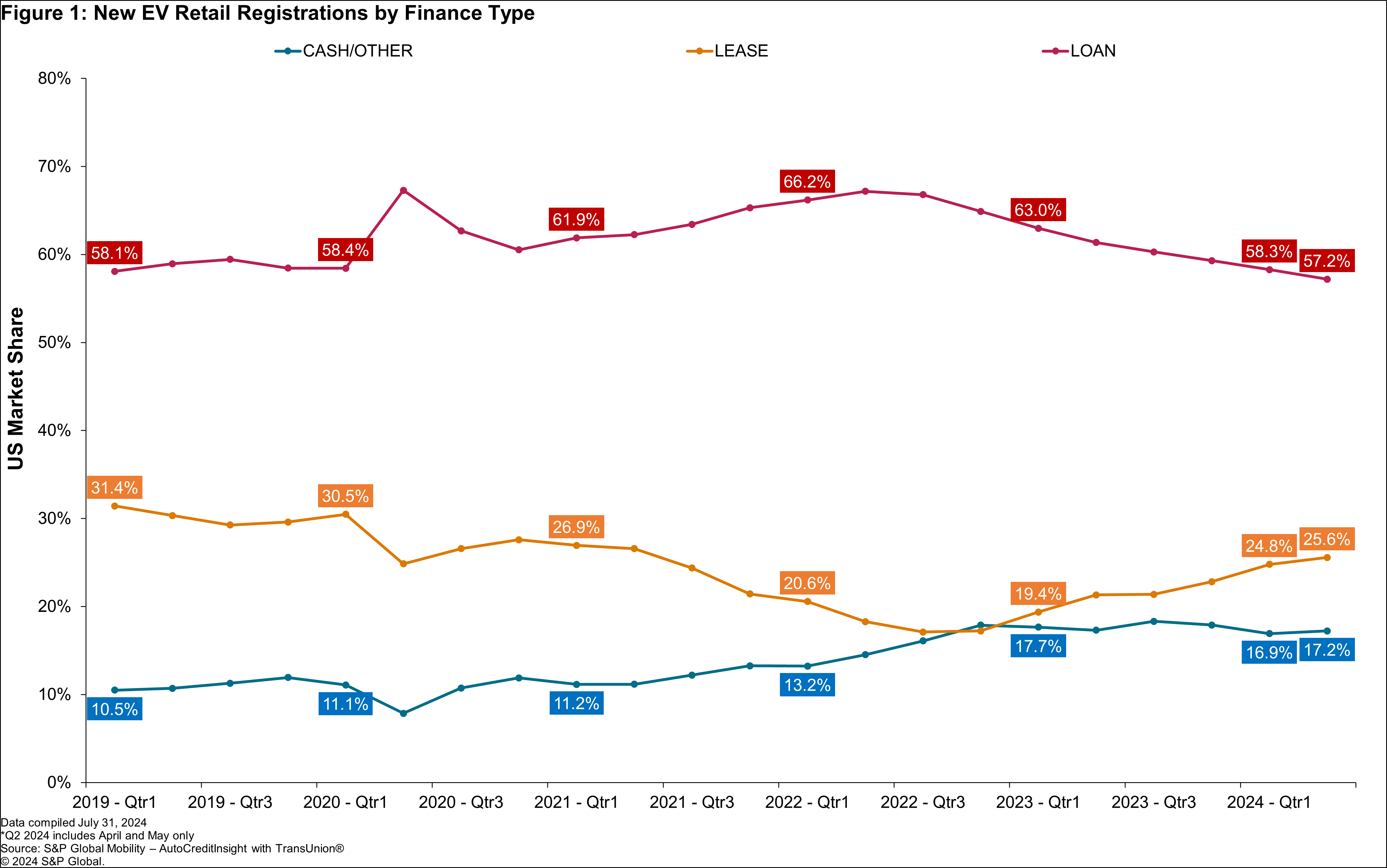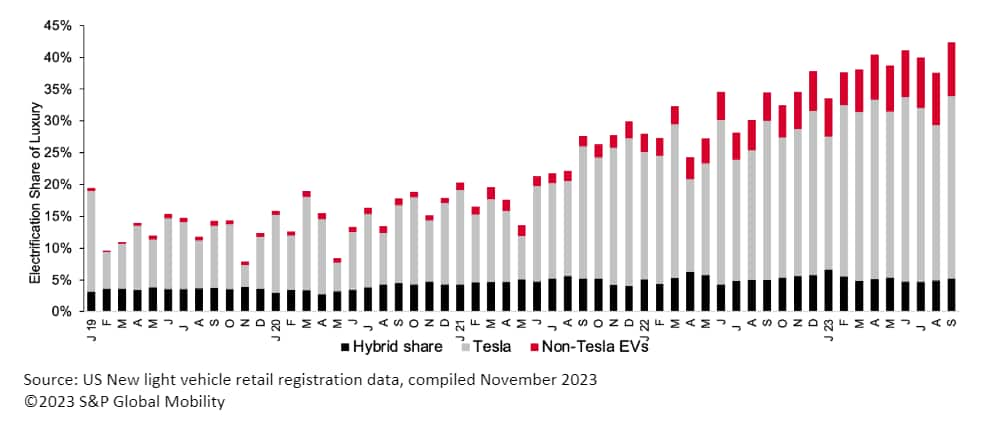LISTEN TO THIS FUEL FOR THOUGHT PODCASTRising new vehicle prices in the US and Europe are leaving cash-strapped consumers with limited options for cheap cars - and the affordability gap is getting worse as premium-priced electric vehicles enter the...
LISTEN TO THIS FUEL FOR THOUGHT PODCAST
Rising new vehicle prices in the US and Europe are leaving cash-strapped consumers with limited options for cheap cars - and the affordability gap is getting worse as premium-priced electric vehicles enter the market. But as legacy automakers depart the entry-segment, white space opportunity emerges for new, lower-cost manufacturers to enter the fray.
In the past decade, it was possible to find an entry-level new vehicle for less than $20,000. But pricing in the US market has recently increased dramatically to where $25,000 or even $30,000 is the lowest possible transaction price for a "low-priced" vehicle. Similar activity is occurring in the European market, in the A- and B-segments.
Based on S&P Global Mobility analysis of registration data since 2017, the US market has seen a significant decline in the share of new vehicles registered below a $30,000 price point. In just seven years, the percentage of vehicles registered with an MSRP below $30,000 has decreased from half the market to barely one-quarter - with vehicles in the $41,000-$60,000 band taking up nearly the entirety of that vehicle count.
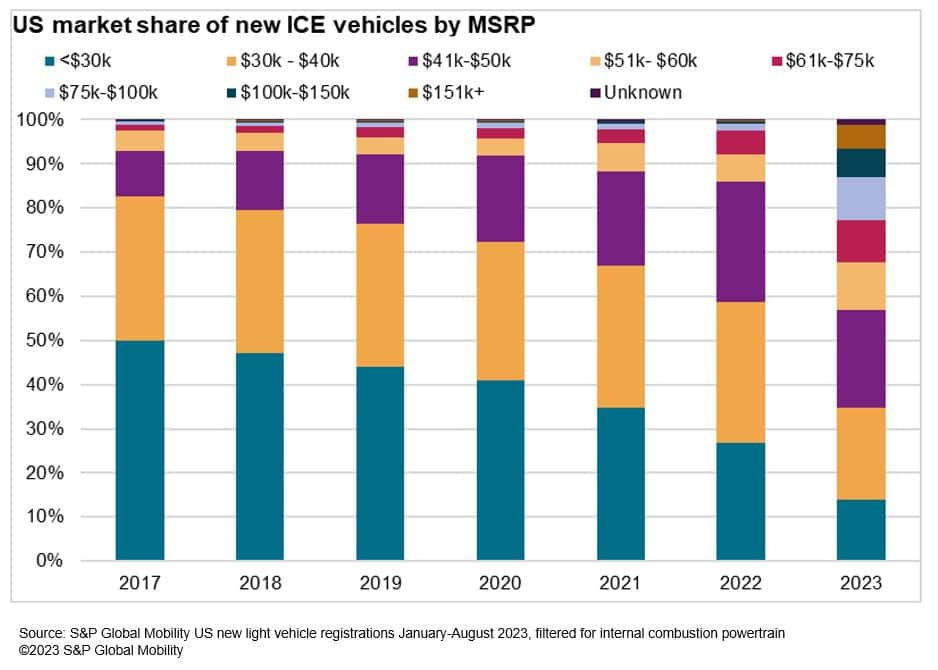
For this analysis, S&P Global Mobility classified an "affordable" vehicle in the US as one with an MSRP below $30,000, compared to a $25,000 threshold in 2017. Even when adjusting for inflation, comparing 2017 to 2023, the US market has a net 16 fewer affordable models.
Notably, some vehicles that did not meet the $25,000 threshold in 2017 are now considered affordable with the $30,000 limit - including some trims of the Buick Encore, Chevrolet Equinox, and Honda Accord. But that's based on raising the pricing bar, while consumer take-home pay has not necessarily followed suit - which is reflected in showroom traffic. (A word about methodology: S&P Global Mobility's data is based on lowest available model trim MSRP, which in this case further substantiates the idea that vehicles have become less affordable.)
It's more than last year's inflationary spike driving price hikes in the US market. Over the course of the last decade, many OEMs who played in the lower end of the market have simply eliminated their entry-level nameplates - examples include the Mitsubishi Mirage, Honda Fit, Toyota Yaris, Mazda2, Hyundai Accent, Ford Fiesta, Dodge Dart, Chrysler 200, and Chevrolet Sonic and Spark.
Small car shortfall in Europe
In Europe, the A- and B-segments were once hypercompetitive hotbeds for entry-level buyers. Now those segments are thinly populated and lightly marketed as automakers chase growing margins in C-segment crossovers to meet growing consumer demand. The number of A- and B-segment vehicles peaked in 2014 at 190 models, but that has since slumped to 160 in 2023 and is predicted to decline further to 124 models in 2024 - and will likely continue declining through 2035, according to S&P Global Mobility forecasts.
Although many automakers cite a struggle to make a business case with small cars, Ford had a long-time success with its Fiesta hatchback. Despite a 47-year history, more than 20 million units sold worldwide, and - prior to the pandemic - a perennial place among the top-selling vehicles in Europe, Ford nonetheless deleted the Fiesta earlier this year. Other low-priced, strong-selling vehicles departing the European scene include the Citroen C1 and Volkswagen Up!, as well as Opel exiting the A-segment in 2019 when it ceased production of the Adam and Karl.
Globally, sales of A-segment vehicles have shrunk from nearly 6.5 million units in 2010 to a predicted 5 million in 2023. S&P Global Mobility forecasts a continued decline for the next several years - with only the South Asia market poised for growth through 2035.
Decline of A- and B-segment cars in Europe expected to continue
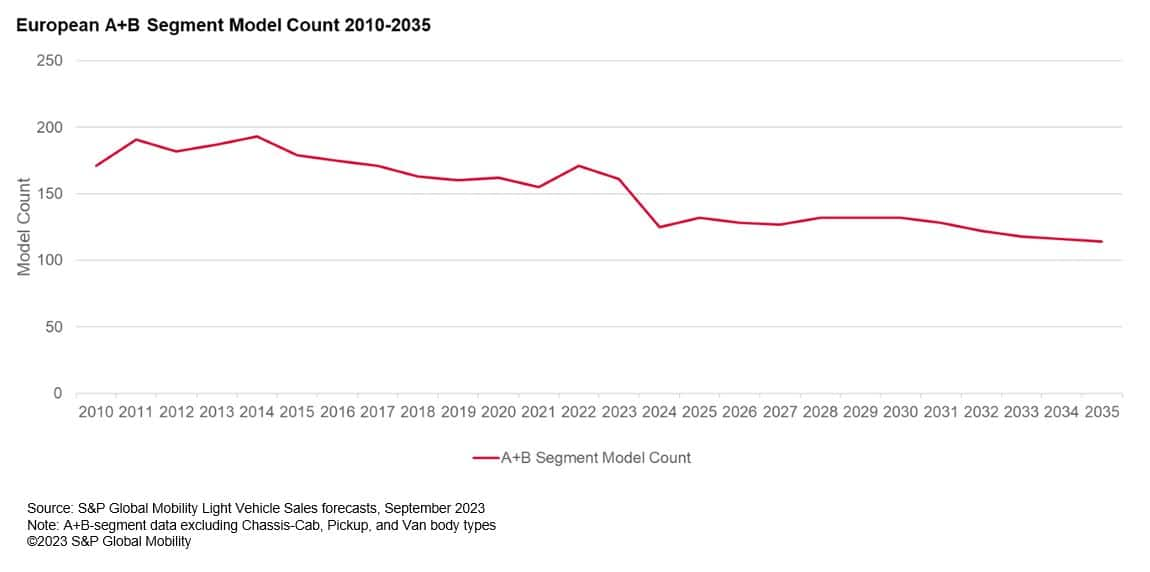
What prompted the exodus from affordable cars?
Two years of significantly higher-than-average nominal vehicle price growth has reduced the number of affordable vehicle options, according to a proprietary study by S&P Global Mobility. Price increases have been a factor of additional vehicle content, as well as a focus on higher trim levels to maximize profit during the low-inventory pandemic years - coupled with regulations addressing vehicle emissions and efficiency.
Average vehicle prices began to rise above inflation rates in 2019 as consumer demands have evolved. The market shifted away from low-cost sedan and hatchback models toward relatively more-expensive SUV body styles.
In the period of 2020 through 2022, supply chain constraints pushed OEMs to prioritize higher-profit top-trim-levels with higher content. This shifted the way OEMs operate - including the elimination of base trim levels for C-segment vehicles in the US - including the Ford Bronco and Honda Civic DX (the new "base" Civic LX starts above $25,000, including destination charges).
CAFE regulations are actually making vehicles larger
Manufacturers began to phase out sedans as CAFE regulations in the US became more stringent. The sleeker silhouette of a sedan is subject to higher, more challenging targets, while SUV-shaped crossovers - even if mounted on the same platform with the same front-drive running gear as their sedan cousins - are typically categorized as light trucks and thus given easier targets to hit in fuel economy regulations.
That is a key reason sedan models such as the Chevrolet Cruze and Ford Fusion were dropped from portfolios, while their platform-sharing siblings Chevrolet Equinox and Ford Edge crossovers remained.
What's more, increasingly stringent regulations drove rising vehicle prices as manufacturers implemented Stop/Start or hybrid technologies to meet emissions compliance and attain CAFE standards. Thus began the phasing out of pure ICE powertrains while increasing the market share of more expensive hybrids and battery-electric vehicles.
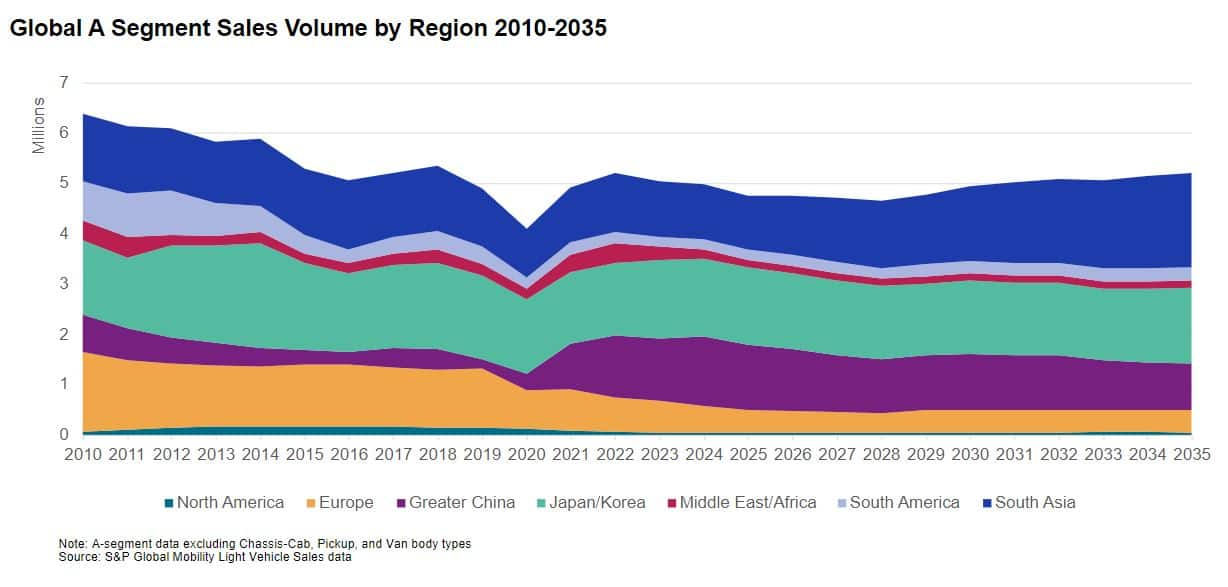
EV affordability an issue
As the global market electrifies, finding inexpensive EVs remains a challenge. Most OEMs are building premium-priced EVs to better amortize costs before aiming for economies of scale. Fully-electric offerings only have three affordable options (under $30,000 before incentives) currently in the US market - the Chevrolet Bolt EV and Bolt EUV, and Nissan Leaf S. And while the BEV market still represents a small fraction of overall registrations, the lion's share of BEV registrations resides in the $41,000-$60,000 MSRP range - with few registered below $40,000.
Consumers are already pushing back on the affordability of electric vehicles. A recent S&P Global Mobility survey of 8,000 EV owners and intenders worldwide showed "affordability" to be the No. 1 reason against purchasing an EV - more so than concerns about range anxiety and the charging network.
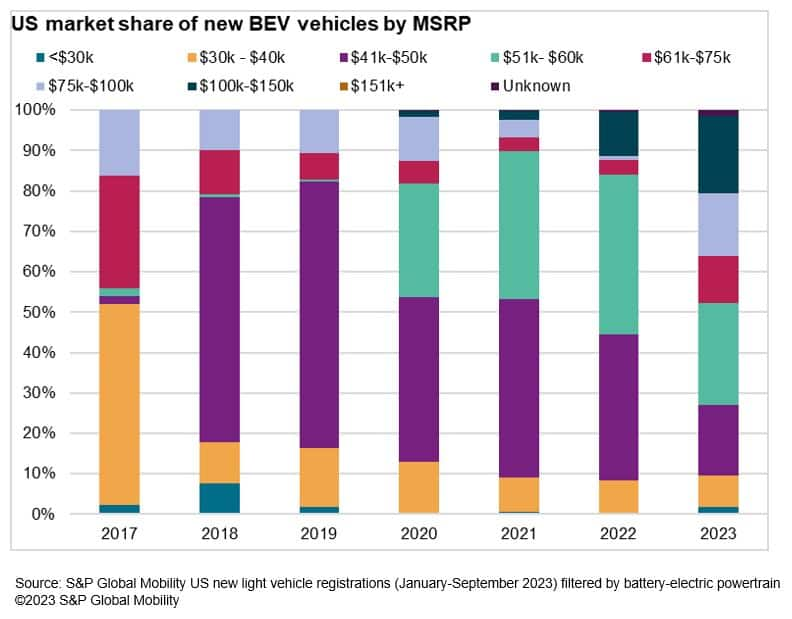
Opening the door to mainland Chinese automakers
This exiting of the entry segment by legacy OEMs could open the door for low-price models to enter the US and European markets via non-traditional channels. In the US market, those vehicles could be designed by mainland Chinese automakers, but built in and imported from Mexico - thereby exempting them from the 25% tariff levied on vehicles assembled in China.
The same applies to the market situation in Europe - not only with affordable, internal-combustion vehicles, but also in the nascent affordable electric vehicle niche. While European automakers scramble to find profitable ways to build affordable EVs, mainland Chinese OEMs have already started penetrating the market.
So far, low-cost EV offerings are limited - which could open the door in the EV space to brands such as NIO (from mainland China), VinFast (from Vietnam), and others planning on entering the US market. Some Chinese EV brands have already made inroads in Europe - including the familiar MG brand that SAIC acquired in 2007 and since leveraged.
That scenario may soon change, however, as legacy automakers deliver entries such as the Kia EV3 and reimagined BEV Renault Twingo - the latter coming in below �20,000.
Despite the temptations of the US market, mainland Chinese OEMs may prefer easier markets to penetrate with affordable cars, said Caroline Hu, consulting principal for the APAC region for S&P Global Mobility.
"Political issues and IRA regulations are not beneficial to foreign brands. Also, the hot overseas areas (for mainland Chinese automakers) are the European, Southeast Asian, and Mexican markets," Hu said.
S&P Global Mobility research of the ASEAN market currently shows same-model prices in Thailand and Indonesia are 1.8 to 2.2 times that of the selling price in mainland China, because it includes import taxes and logistics fees. The same applies to the European market. But as mainland Chinese brands start building factories in overseas markets, vehicle prices will decrease accordingly.
"Chinese brands are trying to build a brand image for intelligent, high-quality, high-performance vehicles - not just cheaper," Hu said.
A quick comeback?
Forecasts aside, the A- and B-segments in Europe tend to be relatively cyclical, and there could be a slight sales rebound for opportunistic players, said Calum MacRae, director of research and analysis for S&P Global Mobility Automotive Supply Chain and Technology.
For example, Renault had refreshed its Clio supermini as a more-expensive, hybrid-only hatchback earlier this year. But citing cost-of-living pressures of its demographic target, in October Renault announced a gas-only version priced at �17,795 in the UK, a �3,500 price cut from the hybrid model (prices for the gas model vary on the Continent, from �21,950 in Germany to �23,400 in France, but still represent a substantial price cut from the hybrid).
"Renault won't be alone in recognizing the opportunity presented by the current dearth of affordable small cars in the market," MacRae said. "Others may follow, not just because of a market share opportunity, but it also fits the narrative of helping entry buyers in a cost-of-living crisis. However, in a segment where margins are consistently razor thin, the opportunity to do this profitably may quickly pass if others jump in."
Affordability is more than price
Of course, the vehicle transaction price is only one part of affordability, as consumers also need to consider incentives, trade-in value, taxes, fuel economy, and loan rates. But at its core, average annual car payments as a percent of income began to rise in 2021 and have continued to climb through 2023. Multiple factors contributed to the increase, including:
Slower income growth rates beginning in 2022;
Steady growth in vehicle prices;
Significantly lower purchase incentives;
Elevated vehicle loan rates prompted by Fed funds rate hikes.
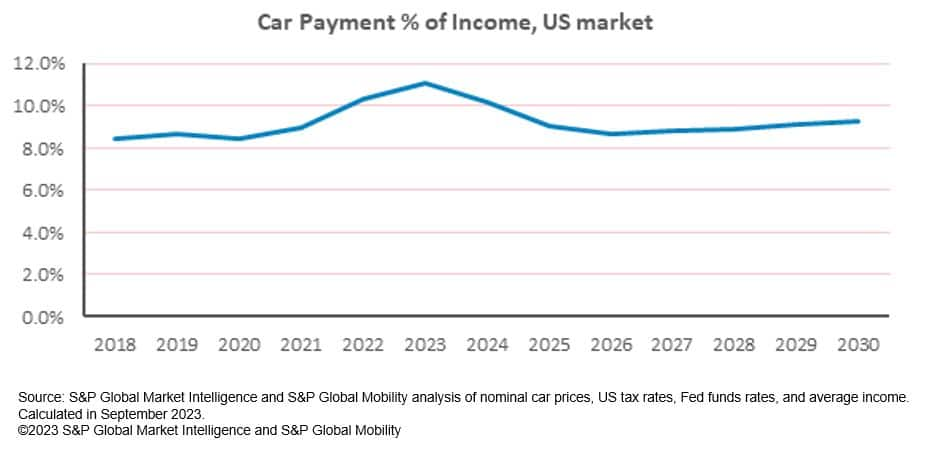
Looking ahead, US income growth and incentives are expected to marginally increase. Average vehicle pricing will remain a factor of body style and powertrain system mix. One silver lining: As OEMs begin attaining economies of scale in electric vehicle production, the consumer should benefit from lower vehicle prices.
Then there is leasing, often seen as the entryway for those households with Maserati tastes but Mazda budgets. But leasing of vehicles sits at less than 19% of total transactions year-to-date in 2023, compared to 30% in 2019. Leasing has been less attractive for these affordable models - especially considering incentives have instead prioritized the leasing of electric vehicles as inventories and model choice improve.
"EV leasing has jumped since April, as a potential relief valve on some of these constraints once production levels improve," said Peter Nagle, associate director of research and analysis for S&P Global Mobility. Also, BEV inventories are rising, prompting the possibility of aggressive incentives from legacy OEMs to match several rounds of price cuts by Tesla. There also will be the benefit of cash incentives (rather than tax breaks) directly from the US government starting in 2024, Nagle added.
"Incentives have been moving higher, and inventory levels are returning to traditional levels," Nagle said. "Some very attractive financing terms are returning for outgoing models that have elevated inventories."
That said, affordability concerns are expected to linger as interest rates and prices remain elevated.
--------------------------------------------------------------
Dive deeper into these mobility insights:
CONNECT WITH OUR MARKET STRATEGY TEAM
AUTOMOTIVE PLANNING AND FORECASTING
WEBINAR: EV OUTLOOK AND PRICING (EUROPE)
SIGN UP FOR OUR TOP 10 TRENDS MONTHLY NEWSLETTER






